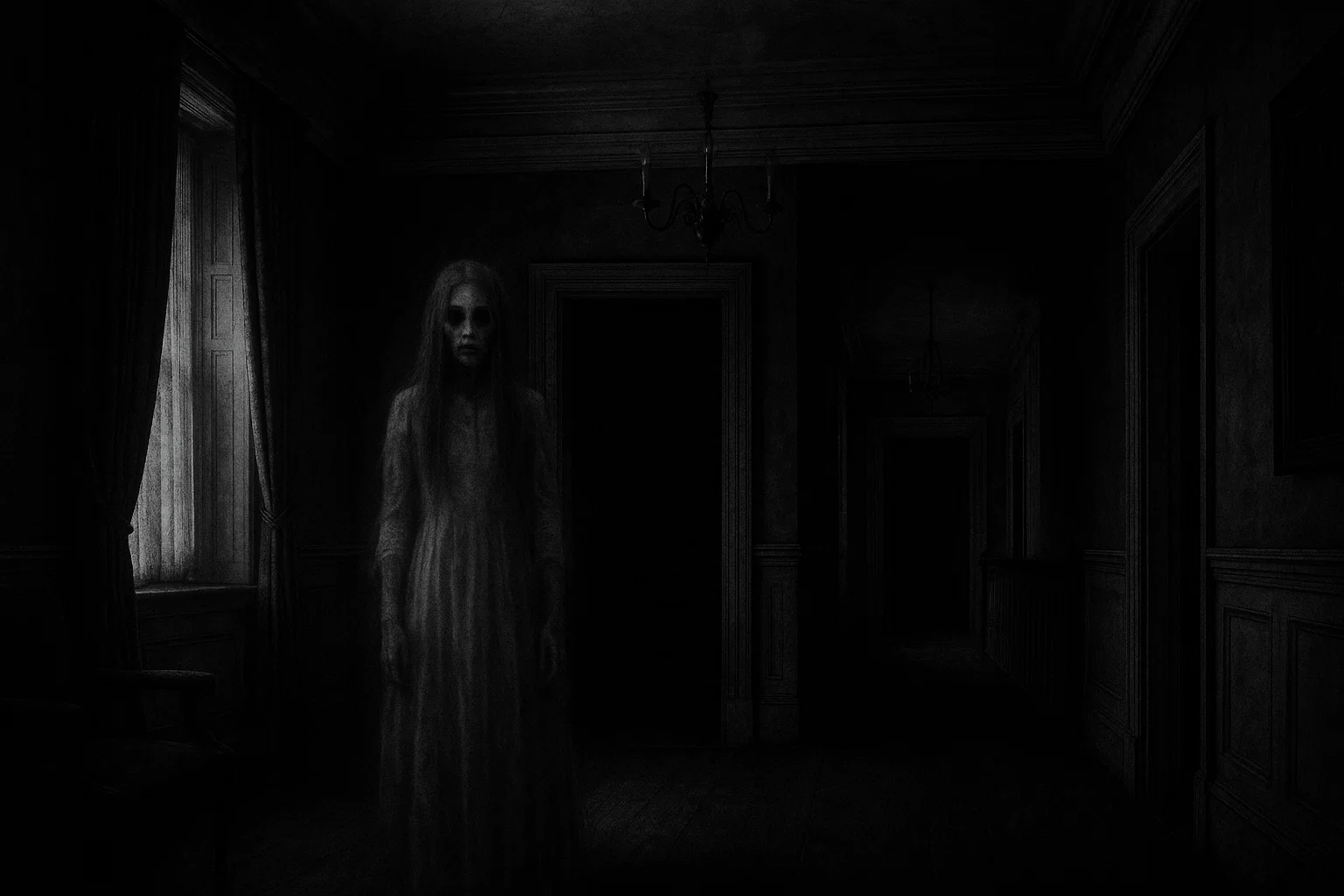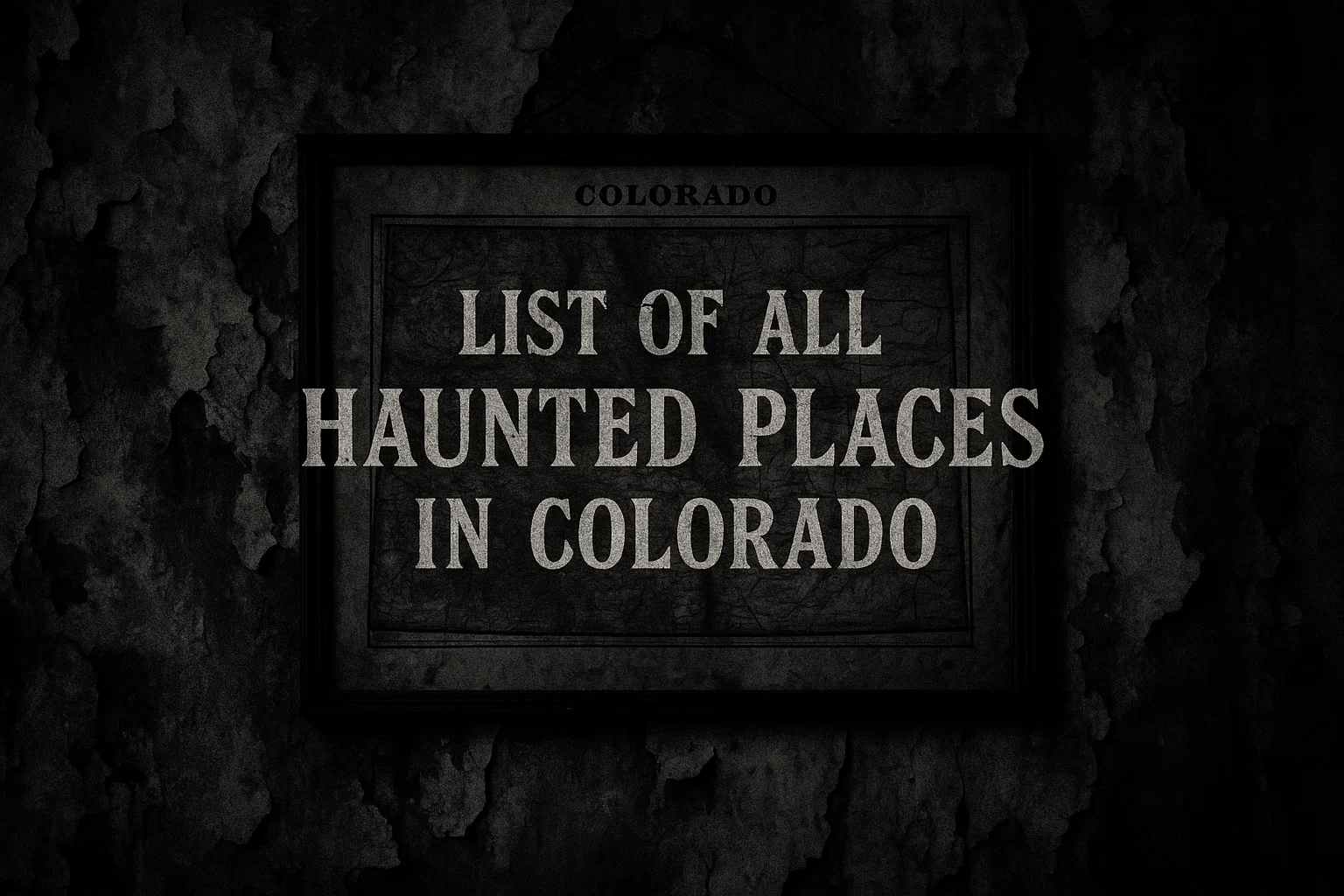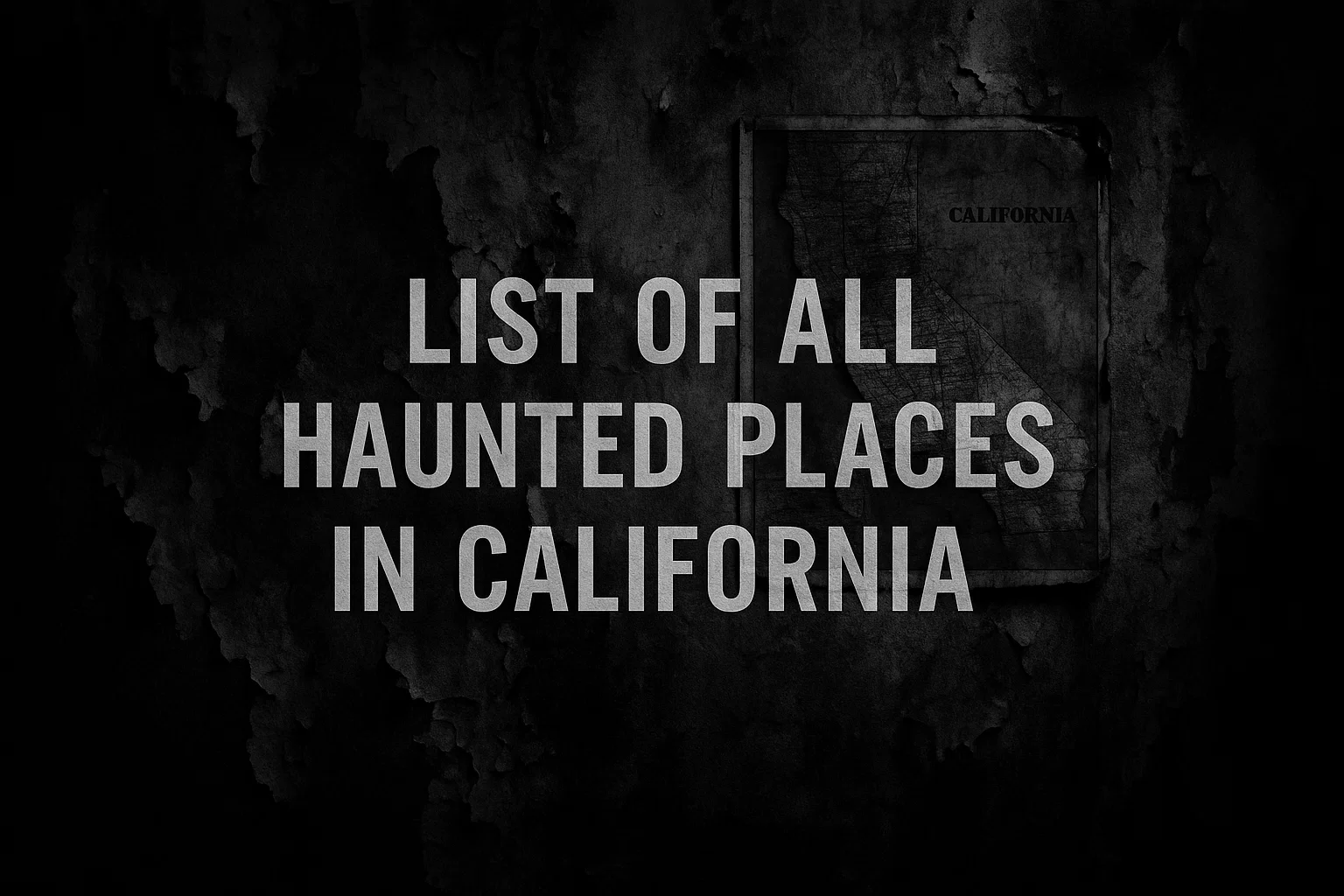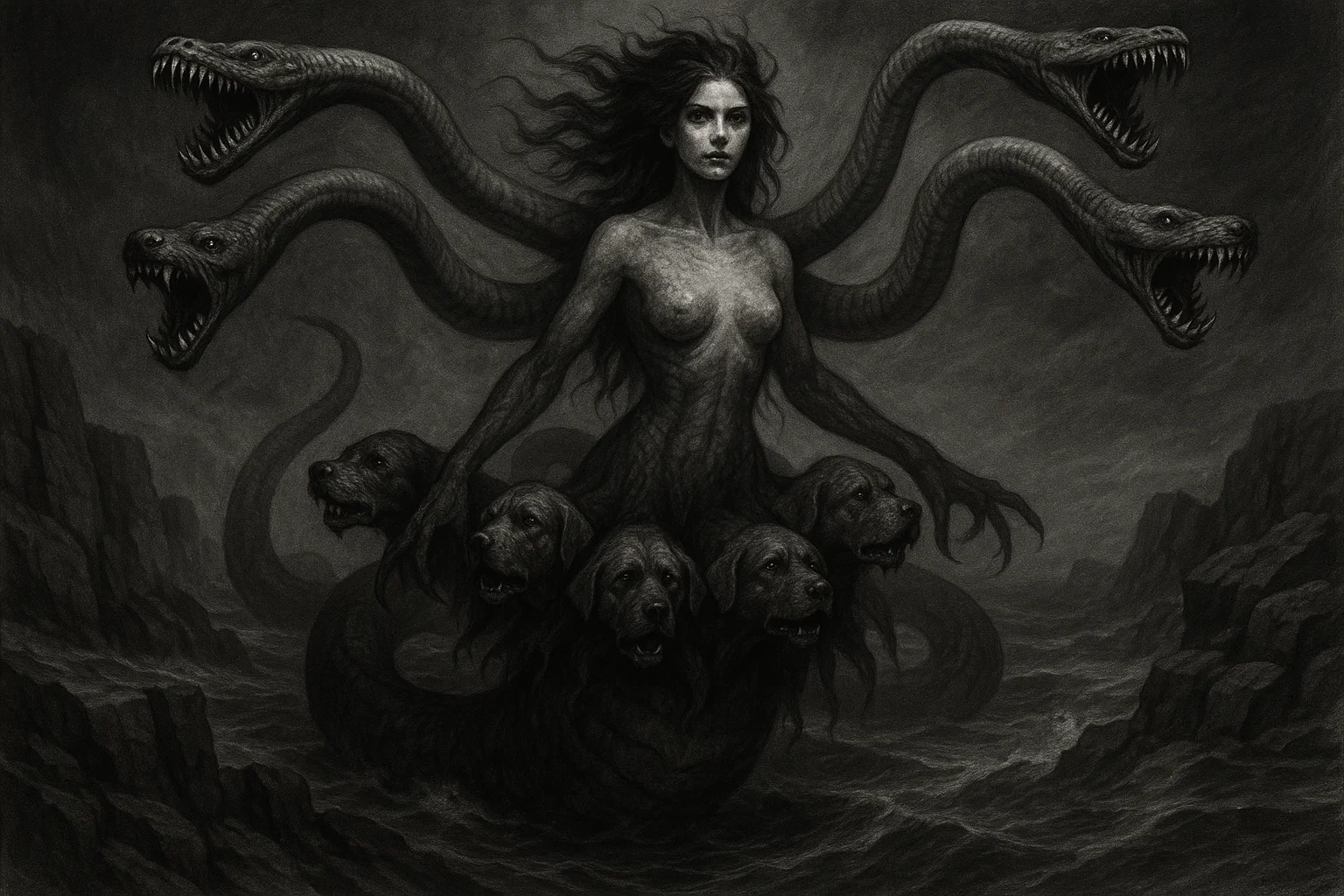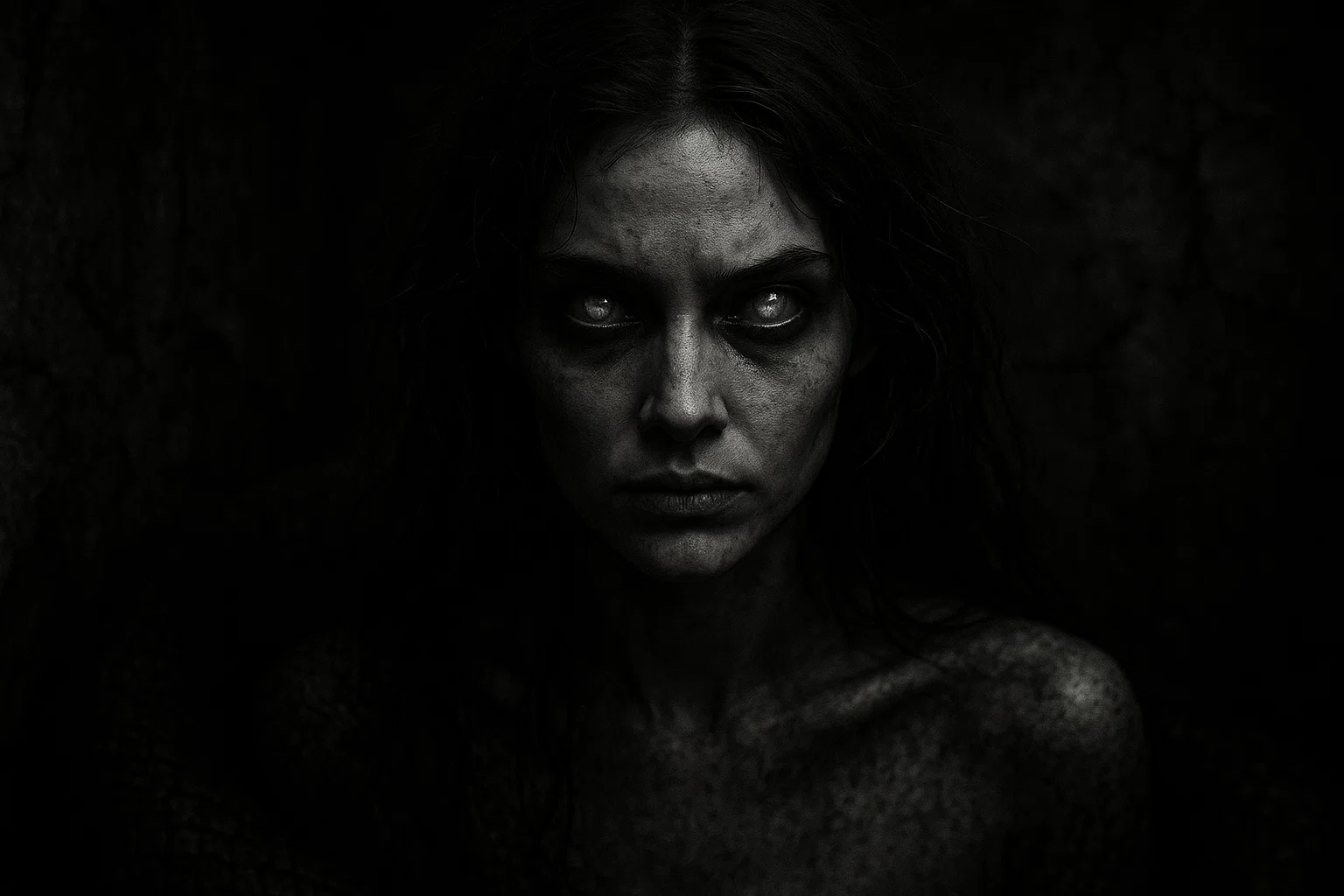Have you heard the whispers of a young spirit lingering in the halls of Cedarhurst Mansion in Huntsville, Alabama?
Tucked away in a gated community off Drake Avenue, this historic estate harbors a chilling tale that has intrigued ghost hunters and locals alike.
The Cedarhurst Mansion haunting, tied to a tragic death from the 19th century, promises eerie encounters and unexplained phenomena. What restless soul roams these grounds, and why does her presence endure? Unravel the mystery of one of Alabama’s most famous hauntings.
Summary
Overview
The Cedarhurst Mansion haunting in Huntsville, Alabama, centers on the ghost of Sally Carter, a 15-year-old girl who died at the mansion in 1837. Built in 1823 by Stephen Ewing, this two-story, brick-walled estate is now a clubhouse for the Cedarhurst gated community.
Reports of Sally’s spirit include sightings of a young girl, disembodied voices, and objects moving inexplicably.
Key facts about the Cedarhurst haunting include:
- Location: Cedarhurst Mansion, 10 Northampton Drive Southeast, Huntsville, Madison County, Alabama.
- Ghost: Sally Carter, a teenager who died of illness while visiting her sister.
- Activity Types: Visual apparitions of a girl in white, auditory phenomena like footsteps and voices, and physical disturbances such as moved furniture and malfunctioning electronics.
- Historical Context: Rooted in the antebellum South, reflecting the era’s high mortality rates and family tragedies.
- Cultural Significance: Sally’s story is Huntsville’s most famous ghost legend, drawing curiosity despite restricted public access.
- Controversy: Skeptics question Sally’s existence due to sparse records, suggesting vandalism or folklore exaggeration, while believers cite consistent sightings.
- Modern Relevance: Reports of paranormal activity persist, with incidents noted as recently as 2023, though the mansion’s private status limits investigations.
Historical Background of Cedarhurst Mansion
The Setting: Huntsville, Alabama
Cedarhurst Mansion, located at 10 Northampton Drive Southeast in Huntsville, Alabama, is a Federal-style, neo-classical home constructed in 1823 by Stephen Ewing, a wealthy Virginian landowner and commissioner of the Indian Creek Navigation Company.
Nestled within the Cedarhurst gated community off Drake Avenue, the mansion’s robust 15-inch-thick brick walls, symmetrical facade, and elegant interiors reflect the opulence of Alabama’s early 19th-century elite.
Huntsville, dubbed the “Rocket City” for its aerospace industry with giants like Boeing, NASA, and Raytheon, was a thriving cotton hub in the 1820s, situated in the fertile Tennessee Valley of Madison County.
You May Also Like: Green Lady of Caerlaverock: The Haunting of Galloway’s Castle
Originally spanning 350 acres, including areas now known as Haysland Square, the estate served as a social and familial nucleus for the Ewing family until 1865.
Today, it functions as a clubhouse, hosting weddings, receptions, and community gatherings, its restored interiors preserving antebellum grandeur amidst modern exclusivity.
Historical and Cultural Context
The Cedarhurst Mansion was built during Alabama’s nascent statehood (admitted 1819), a period defined by a plantation-based economy, stark social hierarchies, and the brutal realities of slavery.
Huntsville, as a cotton trade center, flourished but was marred by dark undercurrents. The Tennessee Valley faced frequent disease outbreaks, notably the 1835 influenza epidemic, which ravaged communities, claiming countless lives, particularly children and young adults.
Yellow fever and cholera also swept through, exacerbated by poor sanitation and humid summers, leaving families like the Ewings vulnerable to loss.
The Ewing family, with deep Virginia roots, wielded significant influence, owning extensive lands and enslaved laborers who maintained Cedarhurst’s operations. The mansion’s construction relied on enslaved hands, their unrecorded suffering a silent tragedy woven into its foundations.
The antebellum South’s social fabric was further strained by the Trail of Tears (1830–1850), which forcibly removed Native American tribes, including the Cherokee and Creek, from Madison County.
Huntsville was a staging ground for these removals, with local militias and federal troops overseeing the displacement, leaving a legacy of trauma that some believe lingers in the region’s spiritual landscape.
The Cedarhurst estate, while a symbol of wealth, was not immune to these broader sorrows, with illness, loss, and the moral weight of slavery shaping its history.
Sally Carter’s death in 1837, likely from a respiratory illness, reflects the era’s high mortality rates, particularly among the young, and her story resonates as a personal tragedy amid a region scarred by systemic suffering.
The mansion’s later history adds layers to its dark past. After the Ewing family sold it in 1865, it passed to J.D. Thornton in 1919, remaining in his family until 1983, when developers transformed the estate into the Cedarhurst gated community.
The 1985 Decorators’ Show House, organized by the Huntsville Museum of Art Women’s Guild, restored its period charm, but paranormal reports surged, suggesting the renovations stirred restless energies.
Huntsville’s reputation as Alabama’s “most haunted city” amplifies the Cedarhurst haunting, with nearby sites like Dead Children’s Playground and Maple Hill Cemetery reinforcing a local culture steeped in ghost stories.
The region’s history of disease, dispossession, and enslavement provides a fertile backdrop for such tales, with Sally’s legend embodying both personal grief and the collective weight of a troubled past.
The Ghost of Sally Carter
Identity and Legend
The Cedarhurst Mansion haunting revolves around Sally Carter, a 15-year-old girl who died on November 28, 1837, while visiting her sister, Mary Ewing, the wife of Stephen Ewing.
Born around 1822, possibly in Giles County, Virginia, or Ohio, Sally was likely a younger sister or cousin of Mary, hailing from a prominent family with ties to the Ewings.
Historical records are scarce, but local lore paints Sally as a vivacious, spirited teenager with a love for Cedarhurst’s sprawling gardens, grand parlors, and airy upstairs rooms. Described as having dark, wavy hair and a penchant for light-colored gowns, she was a cherished guest during her stay in 1837.
Her visit, intended as a joyful reunion, turned tragic when she contracted a sudden illness—possibly influenza, pneumonia, or a bronchial infection, worsened by Huntsville’s damp, chilly autumn. Confined to an upstairs bedroom, Sally succumbed just three weeks before her 16th birthday, her death a devastating blow to the Ewing household.
You May Also Like: Is the Alabama White Thang Real? Sightings, Theories & Evidence
Sally was buried in the Ewing family plot, a small cemetery on the mansion’s grounds, her tombstone inscribed with her name and death date.
The legend of her ghost took root in 1919, when a 17-year-old boy from Dothan, Alabama, staying at Cedarhurst, experienced a vivid dream during a violent thunderstorm.
Sally’s spirit, appearing as a tall, dark-haired girl in a flowing white gown, pleaded, “Help me! The terrible wind has blown my tombstone over!” Skeptical, the boy’s family checked the cemetery the next morning and found Sally’s tombstone toppled, an event that ignited the haunting’s fame.
From then on, Sally’s ghost was reported as a benign presence, wandering the mansion’s halls, watching over sleeping children, or lingering near her former grave. Her tombstone became a magnet for thrill-seekers, leading to vandalism that prompted its relocation in December 1982 to an unmarked plot in Maple Hill Cemetery, Huntsville’s oldest burial ground.
The 1982 exhumation added a chilling twist: some accounts claim Sally’s casket was found empty, sparking theories that her body was never buried, was stolen by grave robbers, or that her spirit’s restlessness dissolved her remains.
Others suggest her body was misidentified during the move, but the empty casket narrative has fueled speculation that Sally’s spirit remains irrevocably tied to Cedarhurst.
Her ghost is said to be most active during storms, reflecting the night of her 1919 appearance, and during large gatherings, as if drawn to the mansion’s lively energy.
Sally’s youth, untimely death, and attachment to the estate make her a poignant figure in Huntsville’s folklore, her story blending historical tragedy with supernatural intrigue.
Local Legends and Variations
The Sally Carter legend has evolved through Huntsville’s rich oral traditions, with multiple variations adding depth and mystery to her haunting:
The Protective Guardian: A prominent tale casts Sally as a protector of children, particularly those staying in her former bedroom. Mothers have reported seeing a young girl in white standing by their children’s beds, gently adjusting blankets or smoothing pillows. One account from the 1970s describes a mother waking to find her toddler’s blanket neatly tucked, with a faint scent of lavender lingering, attributed to Sally’s nurturing spirit. This legend portrays Sally as a caretaker, her youth frozen in a role of eternal vigilance.
The Empty Casket Enigma: The 1982 exhumation, where Sally’s casket was reportedly empty, has spawned a enduring mystery. Some locals believe her body was stolen in the 19th century for medical study, a common practice during the era’s anatomical research boom. Others argue her spirit, unable to rest, caused her remains to vanish, a supernatural act tying her to Cedarhurst. A third theory suggests the Ewing family secretly reburied her elsewhere to protect her grave, leaving an empty coffin as a decoy.
The Red Lantern Warning: In the 1960s, when Cedarhurst’s driveway was a popular “lover’s lane,” teens reported a glowing red lantern moving toward the Ewing cemetery. Described as hovering or swaying, the light was seen as Sally warning trespassers or mourning at her grave. Some claimed the lantern emitted a low hum, chilling those who approached. This variation paints Sally as both protector and mourner, her light a beacon of her unresolved grief.
The Wedding Disruptions: During a June 2022 wedding at the mansion, guests reported chairs tipping over, violin cases tumbling from tables, and a bridesmaid feeling pushed down the staircase. Locals attribute these to Sally’s playful or territorial response to the event’s chaos, suggesting she dislikes disruptions to her home. Another incident in 2019 involved a wedding cake toppling, with witnesses claiming a fleeting glimpse of a girl in white nearby, reinforcing Sally’s active presence during celebrations.
You May Also Like: The Stockwell Poltergeist: Who Was the Stockwell Ghost?
The Juju Doll Ritual: A lesser-known but evocative tale claims enslaved workers at Cedarhurst, possibly of East African descent, crafted a juju doll to guide Sally’s spirit after her death. During her illness, they reportedly gathered beneath her window, singing spirituals and drumming to ease her passage. The doll, adorned with beads and herbs, was buried with her to protect her in the afterlife. Some believe this ritual, rooted in Gullah or Yoruba traditions, inadvertently anchored Sally’s spirit, explaining her persistent hauntings.
The Influenza Tragedy’s Last Echo: This variation ties Sally’s death to the 1835 influenza epidemic, though her 1837 death suggests a later illness. It emphasizes her isolation during her final days, cared for by enslaved women who mourned her with ritualistic chants. Their grief, combined with Sally’s fear of dying far from home, is said to have bound her spirit to the mansion, her whispers a lingering plea for comfort.
The Spectral Suitor: A romantic twist suggests Sally was betrothed to a young man, possibly a Huntsville merchant’s son, before her death. Her ghost is said to linger near the mansion’s front parlor, where she once danced with him, hoping for his return. Rare reports of a male voice or a second shadowy figure in the parlor support this, though Sally remains the primary spirit.
These variations reflect Huntsville’s complex history, blending themes of youth, loss, slavery, and community ritual. They also highlight the mansion’s role as a cultural touchstone, with Sally’s story adapting to reflect local fears, hopes, and spiritual beliefs.
Unique Aspects of the Cedarhurst Haunting
Beyond the core legend, several unique aspects of the Cedarhurst haunting deepen its narrative:
- The Storm Connection: Sally’s appearances are strongly tied to thunderstorms, a pattern noted since 1919. Locals believe the electrical energy of lightning amplifies her presence, with reports of flickering lights, static in the air, or sudden temperature drops during storms, particularly in her bedroom.
- The Lavender Scent: Multiple witnesses, especially in the 1980s and 1990s, reported a distinct lavender scent accompanying Sally’s apparitions, possibly linked to her personal toiletries or the Ewing family’s use of lavender sachets. This olfactory phenomenon adds a sensory layer to the haunting.
- The Portrait Mystery: A faded portrait, discovered during the 1985 restoration, is rumored to depict Sally, showing a young girl with dark hair and a wistful expression. Kept in storage due to its fragile condition, the portrait’s authenticity is debated, but some claim it radiates an eerie warmth when viewed, as if Sally’s spirit lingers within it.
- The Enslaved Workers’ Influence: The role of enslaved workers in Sally’s story extends beyond the juju doll. Oral histories suggest a woman named Hanna, an enslaved healer, tended to Sally during her illness, using herbal remedies and spiritual chants. Hanna’s grief at Sally’s death, coupled with her cultural practices, may have contributed to the haunting’s spiritual intensity.
- The Child’s Toy: In the 1990s, a small, wooden spinning top was found in the mansion’s attic, inscribed with the initials “S.C.” Some believe it was Sally’s, a cherished possession she played with during her visit. The top, now in a private collection, is said to spin on its own when placed near her former bedroom, a rare physical artifact tied to the haunting.
Sightings and Testimonies of the Cedarhurst Mansion Haunting
The Cedarhurst Mansion haunting has been a cornerstone of Huntsville folklore since 1919, with sightings reported by residents, visitors, security guards, and event attendees.
The mansion’s current role as a clubhouse in a gated community restricts public access, but stories persist, fueled by private events like weddings and community gatherings.
The Ewing family plot, once a draw for thrill-seekers, was relocated in 1982, yet paranormal reports continue unabated.
Below is a comprehensive table summarizing all known sightings, with precise dates where available, drawn from local accounts, community testimonies, and regional folklore:
| Date | Witness | Location | Description | Quote/Excerpt |
|---|---|---|---|---|
| October 1919 | Unnamed Boy, Dothan | Sally’s Bedroom | Dreamed of Sally pleading to fix her toppled tombstone during a storm; found it fallen the next day. | “She said, ‘Help me! The wind has blown my tombstone over!’ It was true.” |
| July 1968 | Clara W., Local Teen | Ewing Cemetery | Saw a red lantern moving toward the cemetery at night, felt a cold breeze and smelled lavender. | “A red light floated to the graveyard; it got cold, and I smelled lavender.” |
| November 1975 | James T., Visitor | Upstairs Hall | Heard footsteps and saw a girl in white vanish near Sally’s room during a storm. | “Steps echoed, then a girl in white disappeared by the bedroom.” |
| March 1980 | Robert L., Security Guard | Upstairs Rooms | Heard footsteps, doors slamming, and a whisper saying “Stay” while alone at night. | “Footsteps upstairs, doors slammed, and a voice whispered ‘Stay’—nobody there.” |
| September 1985 | Emily S., Decorator | Clubhouse Main Room | Noticed pillows scattered, a cold spot, and a lavender scent during restoration. | “Pillows were scattered, it felt freezing, and I smelled lavender in that room.” |
| June 1995 | Laura M., Mother | Sally’s Bedroom | Saw a girl in white watching her child sleep, blanket adjusted, during a stay. | “A girl in white stood by my son’s bed; the blanket was tucked neatly.” |
| April 2005 | Michael P., Event Guest | Staircase | Felt a push on the stairs, heard a girl’s giggle, and smelled lavender. | “Something pushed me on the stairs; I heard a giggle and smelled lavender.” |
| October 2015 | Sarah K., Wedding Guest | Main Hall | Saw chairs tip, violin cases fall, and felt a presence during a wedding. | “Chairs tipped, violin cases fell—it felt like Sally was watching us.” |
| June 2022 | Rachel T., Bridesmaid | Staircase | Felt pushed down stairs, saw a fleeting figure in white during a wedding. | “I felt a push, saw a girl in white—she vanished in a flash.” |
| April 2023 | David R., Security Guard | Grounds | Saw a figure in white near the former cemetery site at midnight, heard soft sobbing. | “A girl in white was by the old graveyard, sobbing; she vanished when I approached.” |
| Undated | Anonymous Resident | Parlor | Found a wooden spinning top spinning on its own, initials “S.C.” visible. | “That top spun by itself in the parlor; it had ‘S.C.’ carved on it.” |
The sightings, spanning from 1919 to 2023, underscore the Cedarhurst Mansion haunting’s enduring grip on Huntsville lore. The 1919 incident, with the Dothan boy and the toppled tombstone, established Sally’s legend, lending it an air of verifiable mystery.
Visual apparitions, such as the red lantern in 1968 or the girl in white in 1975 and 2023, suggest Sally’s strong attachment to the mansion and its former cemetery.
You May Also Like: The Girl in the Red Skirt (Hanako-san) | Horror Story
Auditory phenomena, like footsteps, whispers, and giggles reported by guards and guests, indicate an active, intelligent spirit, particularly in the upstairs rooms. Physical disturbances, such as the 2022 wedding incidents and the spinning top, point to Sally’s interaction with the living, often during high-energy events or storms.
The recurring lavender scent, noted in multiple accounts, adds a unique sensory dimension, reinforcing Sally’s personal connection to the estate. Despite restricted access, the consistency of reports and the emotional resonance of Sally’s protective, youthful presence keep the legend vibrant, making Cedarhurst a paranormal touchstone.
Theories Explaining the Cedarhurst Mansion Haunting
Paranormal Theories
Unresolved Grief and Youthful Spirit: Sally’s death at 15, far from her home, likely left her spirit tethered to Cedarhurst, where she found joy. Her protective actions, like watching children or adjusting blankets, suggest a lingering maternal instinct, common in young spirits seeking purpose after an abrupt end.
Attachment to the Estate: Sally’s deep affection for Cedarhurst’s gardens, parlors, and rooms could anchor her spirit, with her apparitions tied to cherished spaces like her bedroom or the former cemetery. The empty casket found in 1982 supports this, implying her spirit never departed the estate.
Ritual Influence and Spiritual Binding: The juju doll and East African rituals performed by enslaved workers, possibly led by Hanna, may have spiritually bound Sally to the mansion. Intended to guide her to the afterlife, these practices could have inadvertently trapped her spirit, explaining her persistent, active presence.
Disturbance from Vandalism: The frequent vandalism of Sally’s grave before 1982, including toppled tombstones and desecration, may have disturbed her rest, amplifying her activity as a protective response to her memory’s violation, particularly during storms that echo the 1919 incident.
Rational Theories
Folklore Exaggeration and Cultural Myth: The paucity of records for Sally Carter suggests her story may be a folkloric creation, amplified by Huntsville’s penchant for ghost stories. The 1919 incident could be a fabricated tale, with subsequent sightings driven by suggestion, local storytelling, and the mansion’s eerie ambiance.
Environmental and Structural Factors: The mansion’s aged structure, with creaking oak floors, drafty windows, and 19th-century wiring, could produce sounds like footsteps or slamming doors. Electrical surges may cause flickering lights or malfunctioning electronics, mistaken for Sally’s influence, especially during storms.
You May Also Like: Was It Real? The Choccolocco Monster and Alabama’s Wildest Urban Legend
Psychological Priming and Suggestion: Visitors aware of the Cedarhurst haunting may experience confirmation bias, interpreting natural phenomena—such as wind moving objects, shadows from passing cars, or creaking wood—as paranormal. The legend’s prominence, especially during events, heightens sensory misinterpretations.
Vandalism and Human Interference: The toppled tombstone, scattered pillows, and other disturbances could stem from teen pranks or trespassers, common in the 1960s–1980s when Cedarhurst was a “lover’s lane.” The red lantern sightings might be locals deterring intruders, misattributed to Sally’s ghost.
Comparison with Similar Hauntings
The Cedarhurst Mansion haunting shares themes with other U.S. hauntings involving young spirits or antebellum tragedies:
| Haunted Place | Location | Ghost Name(s) | Type of Activity | Historical Context | Similarity to Cedarhurst |
|---|---|---|---|---|---|
| Nancy Mountain | Haines Island, AL | Nancy | Visual (lantern light), auditory (cries) | Civil War maternal loss | Personal tragedy, female ghost |
| Kali Oka Plantation | Saraland, AL | White woman, child | Visual, auditory (cries) | 1895–1900 tragedy | Female spirit, protective role |
| Lucas Tavern | Montgomery, AL | Eliza Lucas | Visual, auditory | 1820 tavern, hostess’s death | Historical female, benign presence |
| Drish House | Tuscaloosa, AL | Sarah Drish | Visual (fires), auditory | 1837 plantation, 1884 death | Tragic female ghost |
| Gaineswood Plantation | Demopolis, AL | Evelyn Carter | Auditory, visual | 1843 plantation, nanny’s death | Named female, antebellum setting |
| Lemp Mansion | St. Louis, MO | Lemp family | Visual, auditory, tactile | 19th-century suicides | Family tragedy, active spirits |
| Whaley House | San Diego, CA | Yankee Jim Robinson | Visual, auditory | 1857 home, execution | Specific figure, tragic death |
| Winchester Mystery House | San Jose, CA | Rifle victims | Visual, auditory | 1884 mansion, construction | Multiple spirits, historical home |
| Lizzie Borden House | Fall River, MA | Borden family | Visual, auditory, tactile | 1892 murders | Specific figures, tragic events |
| Carnton Mansion | Franklin, TN | Civil War soldiers | Visual, auditory | 1826 plantation, war hospital | Antebellum tragedy, multiple spirits |
| McRaven House | Vicksburg, MS | Civil War soldiers | Visual, auditory | 1797 home, war hospital | War-related spirits, historical |
| Waverly Hills Sanatorium | Louisville, KY | Patients | Visual, auditory, tactile | 1910 sanatorium, TB deaths | Institutional, multiple spirits |
The Cedarhurst haunting aligns with Nancy Mountain’s personal tragedy, though Sally’s youthful, protective nature sets her apart. The Kali Oka Plantation shares a female spirit and protective role, but Sally’s defined identity is more singular.
Lucas Tavern’s Eliza Lucas mirrors Sally’s benign presence, while Drish House’s Sarah Drish shares the antebellum female tragedy, differing in manifestations.
Unlike institutional hauntings like Waverly Hills, Cedarhurst’s domestic setting and single, named spirit create an intimate narrative, deeply rooted in Huntsville’s haunted legacy and personal loss.
Conclusion
The Cedarhurst Mansion haunting in Huntsville, Alabama, weaves a poignant tale of youthful tragedy and supernatural endurance. The ghost of Sally Carter, a 15-year-old who died in 1837, lingers in the elegant halls and grounds of this 1823 estate, now a private clubhouse.
From spectral apparitions in white, accompanied by a lavender scent, to scattered pillows and spinning tops, Sally’s gentle spirit captivates with its emotional resonance.
Testimonies from 1919 to 2023, including toppled tombstones, wedding disruptions, and eerie whispers, keep her legend alive, despite restricted access and historical ambiguity.
Whether driven by unresolved grief, ritualistic binding, or Huntsville’s dark past of disease and dispossession, the Cedarhurst haunting remains a cornerstone of Alabama’s paranormal heritage, inviting reflection on the stories that echo through the ages.

